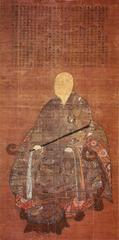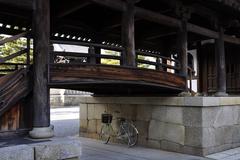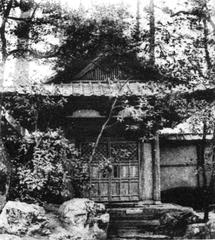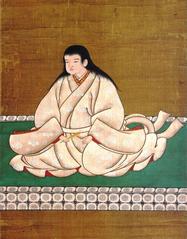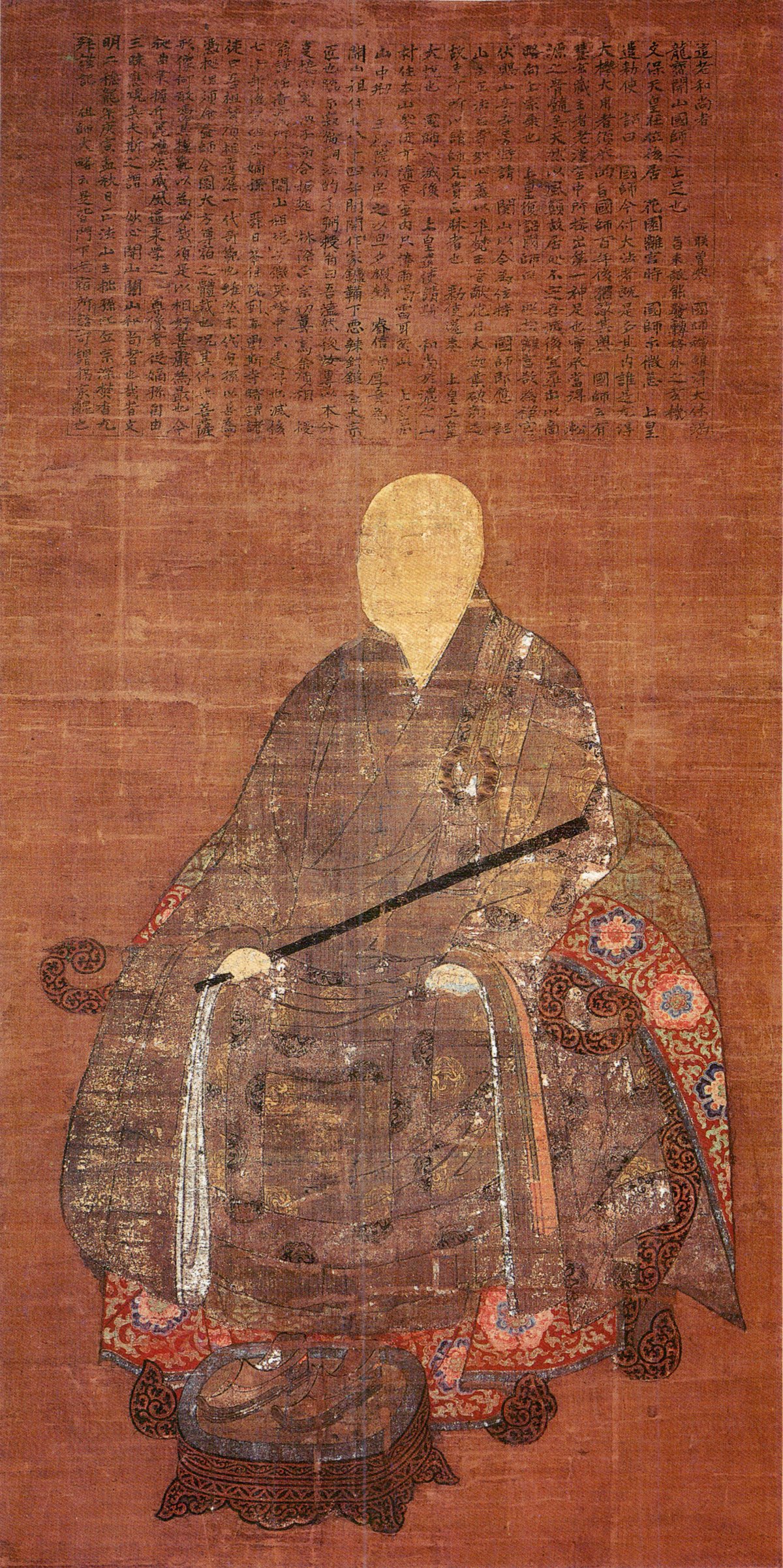
Myōshin-ji Kyoto: Visiting Hours, Tickets, and Historical Sites Guide
Date: 14/06/2025
Introduction to Myōshin-ji Temple
Myōshin-ji Temple, located in Kyoto’s Hanazono district, is the head temple of the largest branch of the Rinzai Zen school and one of Japan’s most significant Zen Buddhist complexes. Founded in 1337 by Emperor Hanazono, Myōshin-ji’s sprawling grounds include more than 46 sub-temples, tranquil gardens, and a rich tapestry of historical and cultural assets. The complex not only serves as a living center for Zen Buddhist practice—especially zazen meditation and kōan study—but also contributes to Kyoto’s educational and artistic life through institutions like Hanazono University.
This guide offers an in-depth look at Myōshin-ji’s history, architecture, visitor facilities, ticketing, and practical travel tips, ensuring you have all the information needed to experience one of Kyoto’s most profound cultural landmarks. (Myōshin-ji Official English Site, Traditional Kyoto, Japan365days, Japan Welcomes You)
Table of Contents
- Historical Overview
- Architectural Highlights
- Zen Practice and Spiritual Programs
- Visitor Information
- Must-See Features and Nearby Attractions
- Seasonal Highlights and Events
- FAQs
- Conclusion & Travel Resources
Historical Overview
Founding and Imperial Patronage
Myōshin-ji, meaning “Temple of the Enlightened Mind,” was established in 1337 when Emperor Hanazono, a devout Zen practitioner, converted his imperial villa into a temple. Under the guidance of Zen master Shūhō Myōchō (Daitō Kokushi) and his disciple Kanzan Egen, the temple became a center for authentic Zen training. Hanazono’s abdication and dedication to Zen practice symbolize the temple’s deep roots in imperial and religious history. (Myōshin-ji Official English Site, Traditional Kyoto)
Growth and Legacy
Over the centuries, Myōshin-ji expanded both physically and spiritually, now serving as the headquarters for more than 3,400 affiliated temples and around 7,000 Rinzai Zen monks. Despite destruction during the Ōnin War (1467–1477), most buildings were rebuilt in the 15th–17th centuries, showcasing exquisite Zen architecture influenced by Sung-dynasty China. Myōshin-ji’s administrative system and educational contributions have significantly shaped the propagation of Zen Buddhism in Japan. (Traditional Kyoto, Japan365days)
Architectural Highlights
- San-mon (Mountain Gate): Rebuilt in 1599, this imposing gate is an Important Cultural Property and marks the grand entrance to the temple.
- Hattō (Dharma Hall): The spiritual core of the complex, featuring a dramatic ceiling painting of a dragon by Kanō Tan’yū.
- Butsuden (Buddha Hall): Home to the principal statue of Shaka Nyorai and other revered figures.
- Kuri (Temple Kitchen): The administrative and culinary hub, preserved as a testament to monastic life.
- Ancient Temple Bell: Dating to 698, this is Japan’s oldest operational temple bell and is designated a National Treasure.
- Sub-temples: Notable sub-temples like Taizō-in, Keishun-in, Shunkō-in, and Daihō-in each offer unique gardens, art, and meditation experiences. (Japan365days)
Zen Practice and Spiritual Programs
Myōshin-ji remains a vibrant center for Zen Buddhism, emphasizing zazen (seated meditation), kōan study, and direct transmission of enlightenment. Many sub-temples offer meditation workshops and retreats, with Shunkō-in providing sessions in English. The daily life of resident monks includes meditation, chanting, and communal work, exemplifying Zen discipline and mindfulness. Visitors can join zazen sessions, participate in tea ceremonies, and, in some cases, stay overnight in temple lodging (shukubō) for an immersive experience. (Japan Welcomes You)
Visitor Information
Hours, Tickets, and Fees
- General Grounds: Open daily, typically from 9:00 AM to 4:30 PM. No admission fee for walking the main paths and exterior areas.
- Sub-temple Admission: Fees and hours vary:
- Taizō-in: 9:00 AM–5:00 PM, ¥600–¥800.
- Shunkō-in and others: ¥500–¥800, with variable hours.
- Some sub-temples require guided tours for entry.
- Combined Tickets: Occasionally available for multiple sub-temples; inquire on-site or via official websites. (Japan Welcomes You)
Access and Transportation
- Train: JR Sagano Line to Hanazono Station (5–7 min walk).
- Tram: Randen Tram Line, Hanazono Station nearby.
- Bus: Multiple Kyoto city bus routes serve the Hanazono area.
- Parking: Limited; public transportation is recommended. (Japan Journeys)
Guided Tours and Facilities
- Guided Tours: Available in Japanese and occasionally in English, especially at key sub-temples (e.g., Hattō).
- Facilities: Restrooms near main entrances and select sub-temples, vending machines, small souvenir shops, and tranquil gardens.
- Dining: Limited within the complex; options available in surrounding Hanazono neighborhood.
Accessibility
- Paths: Mostly flat, stone-paved, suitable for most visitors.
- Mobility: Some areas have steps or uneven surfaces; wheelchair access is limited, especially inside historic halls and gardens. Contact the temple office for details.
Photography Guidelines
- Outdoors: Photography is generally allowed in gardens and exterior areas.
- Indoors: Restricted in temple halls and during ceremonies; always observe posted signs and staff instructions.
Must-See Features and Nearby Attractions
- Taizō-in: Dry landscape garden by Kanō Motonobu; seasonal highlights.
- Shunkō-in: Meditation sessions in English, fusion of Japanese and Western architecture.
- Keishun-in: Tranquil garden and teahouse.
- Ryōan-ji Temple: World-renowned Zen rock garden, within walking distance.
- Kinkaku-ji (Golden Pavilion): Iconic UNESCO World Heritage site, easily accessible from Myōshin-ji. (Japan365days, Lonely Planet)
Seasonal Highlights and Events
- Spring: Cherry blossom viewing in temple gardens.
- Autumn: Spectacular fall foliage.
- Annual San-mon Zan-hōe (June 18): Buddha service at the San-mon gate.
- Special Openings: Some sub-temples feature limited-time exhibits during peak seasons.
Frequently Asked Questions (FAQ)
Q: What are the visiting hours for Myōshin-ji?
A: Main grounds are open daily, usually 9:00 AM–4:30 PM. Sub-temple hours vary; check official sources.
Q: Do I need tickets to enter?
A: Entry to main grounds is free, but sub-temples typically charge ¥500–¥800, payable on-site.
Q: Are guided tours available?
A: Yes, especially for the Hattō and select sub-temples; English tours are limited.
Q: Is Myōshin-ji accessible for visitors with disabilities?
A: Some areas are accessible, but steps and uneven terrain may pose challenges. Inquire ahead for specific needs.
Q: Can I take photos?
A: Allowed in gardens and outdoors; restricted inside halls.
Q: When is the best time to visit?
A: Spring and autumn for flowers and foliage, or early mornings for fewer crowds.
Q: Is temple lodging available?
A: Yes, shukubō (temple stays) are offered at certain sub-temples; advance reservation is required.
Conclusion & Travel Resources
Myōshin-ji Temple Complex stands as a testament to centuries of Zen Buddhist tradition, imperial history, and artistic achievement. Its tranquil gardens, majestic gates, and living religious community offer a rare glimpse into the heart of Kyoto’s spiritual and cultural life. Whether you seek meditation, architectural beauty, or a peaceful escape, Myōshin-ji promises a rewarding experience.
Travel Tips:
- Plan ahead for sub-temple hours and ticketing.
- Use Kyoto’s efficient public transportation for easy access.
- Enhance your visit with meditation sessions or a temple stay.
- Respect the quiet, contemplative atmosphere and community.
For more information, official updates, and to book guided experiences, consult these resources:
- Myōshin-ji Official English Site
- Traditional Kyoto
- Japan365days
- Japan Welcomes You
- Japan Journeys
- Lonely Planet
- Zen Rinnou Net
Download the Audiala app for guided tours, offline maps, and insider Kyoto travel tips, and follow us on social media for the latest updates.
All information is based on the latest available sources as of June 14, 2025.
